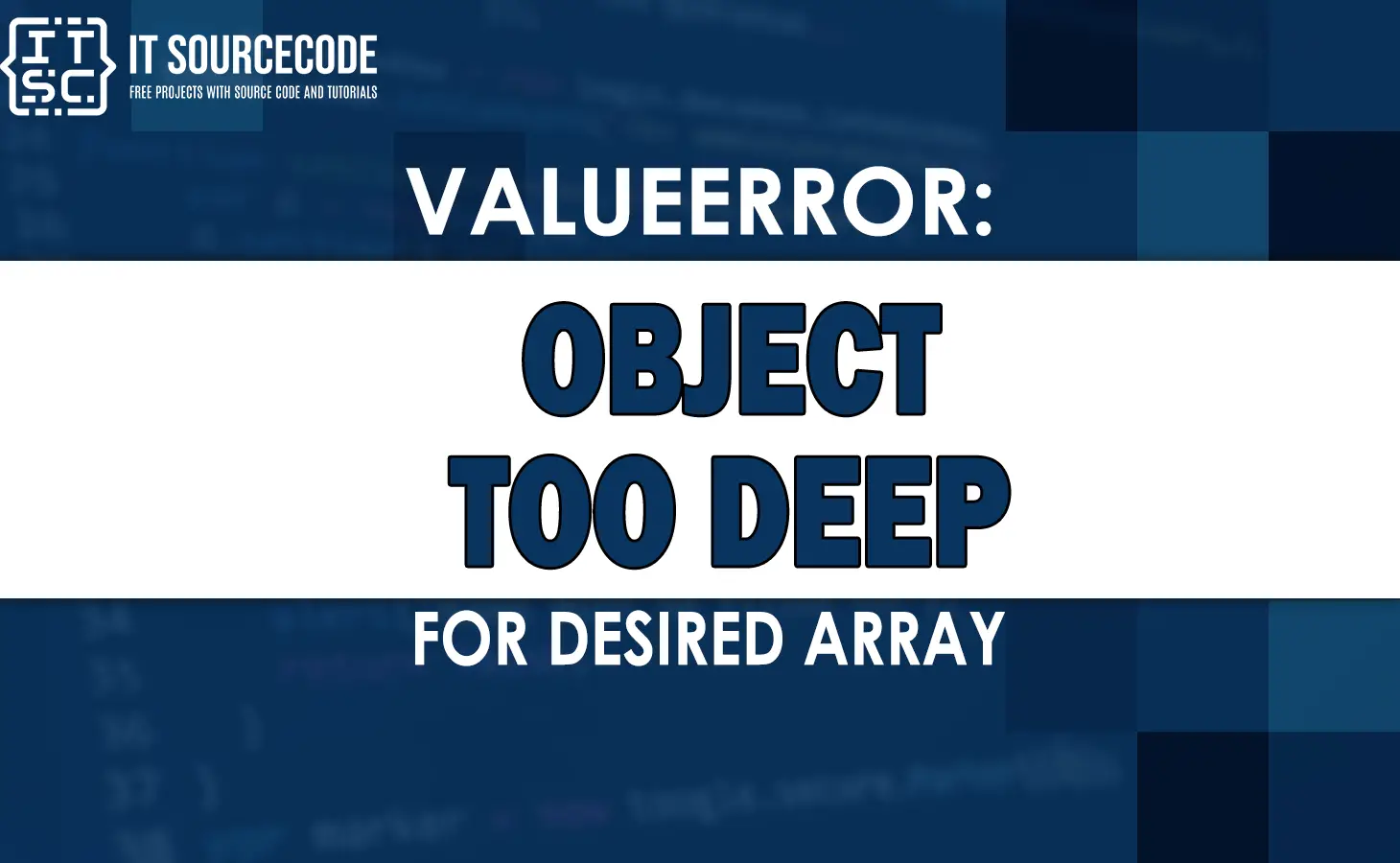One of the common error that developer might have encounter is the ValueError: object too deep for desired array.
This error usually occurs when we attempt to reshape or manipulate arrays in a way that exceeds the system’s memory limits.
Understanding the ValueError object too deep for desired array
The ValueError object too deep for desired array is an error message you may encounter while working with arrays in Python, usually when using libraries like NumPy.
This error occurs when we try to reshape or manipulate an array in a way that exceeds the maximum allowed depth of the array.
How the Error Occurs?
Here’s an example code of how the error occurs:
import numpy as np
sample_variable = np.array([1, 2, 3])
sample_value = np.array([[0.9, 1, 0.5], [0.3, 0.6, 0.4]])
array_result = np.convolve(sample_variable, sample_value, 'same')Output:
Traceback (most recent call last):
File “C:\Users\Dell\PycharmProjects\Python-Code-Example\main.py”, line 6, in
array_result = np.convolve(sample_variable, sample_value, ‘same’)
File “<__array_function__ internals>”, line 180, in convolve
File “C:\Users\Dell\PycharmProjects\Python-Code-Example\venv\lib\site-packages\numpy\core\numeric.py”, line 850, in convolve
return multiarray.correlate(a, v[::-1], mode)
ValueError: object too deep for desired array
In this code example, it uses the NumPy library to perform a convolution operation on arrays.
It convolves “sample_variable” with “sample_value” and stores the result in “array_result” using the ‘same’ mode.
The error is occur because the second argument we passed to numpy.convolve is a two-dimensional array.
How to Fix the ValueError object too deep for desired array Error?
Here are the solutions to fix the ValueError object too deep for desired array Error.
Solution 1: Eliminate the extra dimension to Fix the Valueerror
The first way to solve the valueerror is by eliminating the extra dimension and we will used a slicing the array.
For example:
import numpy as np
sample_variable = np.array([1, 2, 3])
sample_value = np.array([[0.9, 1, 0.5], [0.3, 0.6, 0.4]])
array_result = np.convolve(sample_variable, sample_value[:, 0], 'same')
print(array_result)Output:
[0.9 2.1 3.3]
We used array slicing to choose the first element of each smaller array.
Now we have made both arrays one-dimensional, so the problem is fixed.
Solution 2: Using the reshape() function
The another solution to resolve the valueerror is by Using the reshape() function.
import numpy as np
sample_variable = np.array([1, 2, 3])
sample_value = np.array([[0.9, 1, 0.5], [0.3, 0.6, 0.4]])
sample_value = np.reshape(sample_value, sample_value.size)
print(sample_value)
array_result = np.convolve(sample_variable, sample_value, 'same')
print(array_result)Output:
[0.9 1. 0.5 0.3 0.6 0.4]
[2.8 5.2 4.3 2.7 2.5 2.6]
In this example code, we used the numpy.reshape() function to modify the multidimensional array to one-dimensional.
Solution 3: Using flatten() Function
We can use the flatten() Function to fix the valueerror.
Here’s an example code:
import numpy as np
sample_variable = np.array([1, 2, 3])
sample_value = np.array([[0.9, 1, 0.5], [0.3, 0.6, 0.4]])
sample_value = sample_value.flatten()
print(sample_value)
array_result = np.convolve(sample_variable, sample_value, 'same')
print(array_result)Output:
[0.9 1. 0.5 0.3 0.6 0.4]
[2.8 5.2 4.3 2.7 2.5 2.6]
In this code example, we used the numpy.ndarray.flatten method to take a multi-dimensional array and transform it into a one-dimensional array.
Solution 4: Using the numpy.ravel() function
The last solution to solve the valueerror is by using the numpy.ravel() function
Here’s an example code:
import numpy as np
sample_variable = np.array([1, 2, 3])
sample_value = np.array([[0.9, 1, 0.5], [0.3, 0.6, 0.4]])
sample_value = np.ravel(sample_value)
print(sample_value)
array_result = np.convolve(sample_variable, sample_value, 'same')
print(array_result)Output:
[0.9 1. 0.5 0.3 0.6 0.4]
[2.8 5.2 4.3 2.7 2.5 2.6]
In this example code, the numpy.ravel() function takes an array as input and returns a new array with all the elements flattened into a one-dimensional structure.
FAQs
The “object too deep for desired array” typically occurs when we attempt to convert or manipulate a nested object structure that is too complicated for the desired array format.
In Python, the object too deep for desired array error usually occurs if we are attempting to create a NumPy array, but the input data structure is nested too deeply for NumPy to handle.
Conclusion
In conclusion, we have discuss of how the error occurs and provide example codes and solutions to fix the object too deep for desired array.
Additional Resources
Here are some related topics that you can check out to learn more about the valueerrors:

